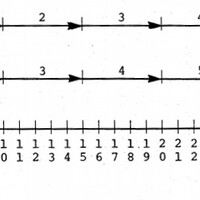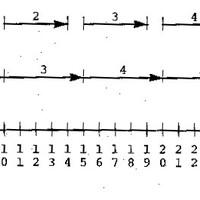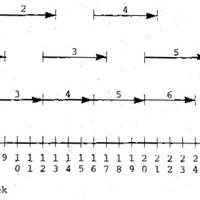-
Title
-
Periods of Circulation and Production
-
Description
-
Marx demonstrates that: (1) because the turnover of capital includes a period of circulation, an additional advance of circulating capital is required for production to continue during the time of circulation; and (2) during its turnover, circulating capital frequently exists in money form, waiting to be exchanged for labor-power, raw materials, and auxiliary materials. … We shall describe the essential aspects of the process.
Suppose that the time of production of a particular capital is five weeks, and that each week $100 of circulating capital must be advanced for production (to purchase labor-power, raw and auxiliary materials). If the time of circulation were zero, a circulating capital of $500 would be required by the capitalist. For each week of the time of circulation, an additional $100 is required so that production may continue.
If the period of circulation is equal to that of production (five weeks), then an additional $500 is required, and the process of turnover may be diagramed as in [the first Figure].
Over the first 10 weeks, a circulating capital of $1000 is advanced; at the end of the tenth week, and every five weeks thereafter, $500 returns from the sphere of circulation, permitting production to continue without an additional outlay of capital.
The situation is fundamentally unchanged if the periods of production and circulation are of unequal lengths. Suppose, for example, that $100 of circulating capital is required per week, that the period of production is five weeks, and that the time of circulation is four weeks. The process of turnover is shown in [the second Figure].
An initial investment of circulating capital of $900 is made over the first nine weeks; at the end of the ninth week, and every five weeks thereafter, $500 returns from the sphere of circulation, permitting production to continue.
Similar results obtain if the period of circulation exceeds the time of production. Again suppose that $100 circulating capital is required each week, but that the period of production is four weeks and that of circulation five weeks, as shown in [the third Figure].
Here, an initial investment of $900 circulating capital is needed; at the end of the ninth week and every four weeks thereafter, $400 returns from circulation.
In each of these cases, the money returning from circulation covers the investment of circulating capital required for the next production period; this is sensible since the returning money is just the converted form of the circulating capital advanced for an earlier production period. The returning money capital remains for a longer or shorter time in money form while it is gradually exchanged for new elements of circulating productive capital.
-
Designer
-
Fox, John
-
Date
-
1985
-
Source
-
Understanding Capital Volume II
-
Bibliographic Citation
-
John Fox, 1985. Understanding Capital Volume II. Progress Books. Figures 4-6





